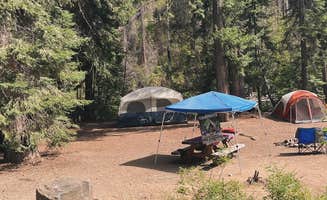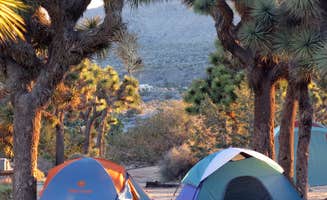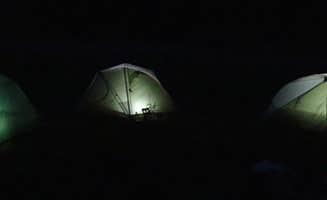Tent camping near Capay, California offers diverse wilderness experiences within the Mendocino National Forest and surrounding public lands. Most campsites in this region sit at elevations between 3,000-5,000 feet, creating significant temperature variations between day and night even in summer months. Road conditions to many campgrounds deteriorate significantly after winter storms, with several requiring high-clearance vehicles.
What to do
Fishing creek waters: Several campgrounds provide access to fishing opportunities that don't require extensive hiking. At Black Rock Campground, "There are some nice places to fish that are just a short walk from the campsites," notes camper Alissa C. Expect to catch salmon and observe various wildlife including deer, quail, and frogs.
Wildlife viewing: Snow Mountain Wilderness offers opportunities to view diverse animal species in their natural habitat. According to one visitor at Snow Mountain Wilderness, "I have not fished here but have seen many others coming in to do just that. Have seen eagles in the canyon everytime I have hiked in." The area also contains a resident elk herd for those willing to ford Cache Creek.
Spring wildflower hiking: The Cache Creek area features exceptional wildflower displays during spring months. One backpacker reports, "Wildflowers are plentiful in the spring" when visiting the Snow Mountain Wilderness. Many trails offer moderate difficulty levels suitable for day hiking or overnight treks.
What campers like
Remote seclusion: The isolation of many campgrounds near Capay provides unparalleled quiet for campers seeking solitude. One visitor to Surveyor Campground describes it as "Not found on a map! Remote!" noting that it was "a sweet surprise after spending an hour on an unimproved wash board road."
Riverside camping spots: Several campgrounds offer sites directly adjacent to creeks and waterways. A backpacker at Snow Mountain Wilderness mentions you can "Hike into campsites right on Cache Creek. If flow allows you can continue on after fording the creek into the Cache Creek Wilderness." These water-adjacent sites provide both scenic value and practical water access.
Free firewood availability: Some campgrounds in the region occasionally provide complimentary firewood when conditions allow. Ann N. at Surveyor Campground notes, "Lett's Lake was closed due to a prior fire. But the upside is that the Forest service has provided free stacks of wood." Always verify current fire restrictions before planning to have a campfire.
What you should know
Road access challenges: Many campgrounds require significant drive time on unpaved forest roads. One visitor to Philbrook Campground simply states: "Great little lake. Good fishing. Rough road in." Prepare for potentially challenging access routes requiring appropriate vehicles.
Insect preparedness: Mosquitoes present a significant issue at most campgrounds during warmer months. Alissa C. warns that at Black Rock Campground "the mosquitoes were out in full force so bug spray is a must." Some sites near Capay also experience seasonal bee activity that can impact meal preparation and outdoor enjoyment.
Water filtration necessity: Drinking water is unavailable at most campgrounds, requiring visitors to either pack in all water or filter from natural sources. A Snow Mountain visitor advises: "Water can be obtained from the creek but needs filtering. Campsites are delineated and many have rock fire rings."
Tips for camping with families
Ground terrain assessment: Finding level ground for family-sized tents requires advance planning. A visitor to Alder Creek Campground notes the sites are "A little uneven on the ground front, but enough choices to make due." Arriving early increases chances of securing more level family-friendly spots.
Temperature preparation: Heavily shaded sites provide relief from summer heat but create colder nighttime conditions. Kate A. at Alder Creek Campground warns, "This site is mostly shaded, so can be colder than other setups around." Pack appropriate layers for significant day-to-night temperature swings.
Vehicle reliability consideration: Remote locations require dependable transportation. Ann N. at Surveyor Campground advises: "Bring lots of water and drive a well running car. You don't want to get stuck out here!" Cell service is nonexistent at most campgrounds, complicating potential breakdown situations.
Tips from RVers
OHV opportunities: Some campgrounds serve as excellent base camps for off-highway vehicle recreation. A visitor to Soda Springs notes that nearby areas provide accessible trails for OHV enthusiasts, though the campground itself has limited amenities and occasional maintenance issues.
Limited RV accessibility: Many campgrounds have narrow access roads and limited turn-around space for larger vehicles. RV camping options are significantly restricted compared to tent camping opportunities, with most suitable sites limited to smaller trailers and camper vans under 25 feet.
Camp host availability: RVers should note that many campgrounds in the region have intermittent or no camp host presence. This affects assistance availability for site selection and emergency situations, requiring self-sufficiency for most camping needs.




